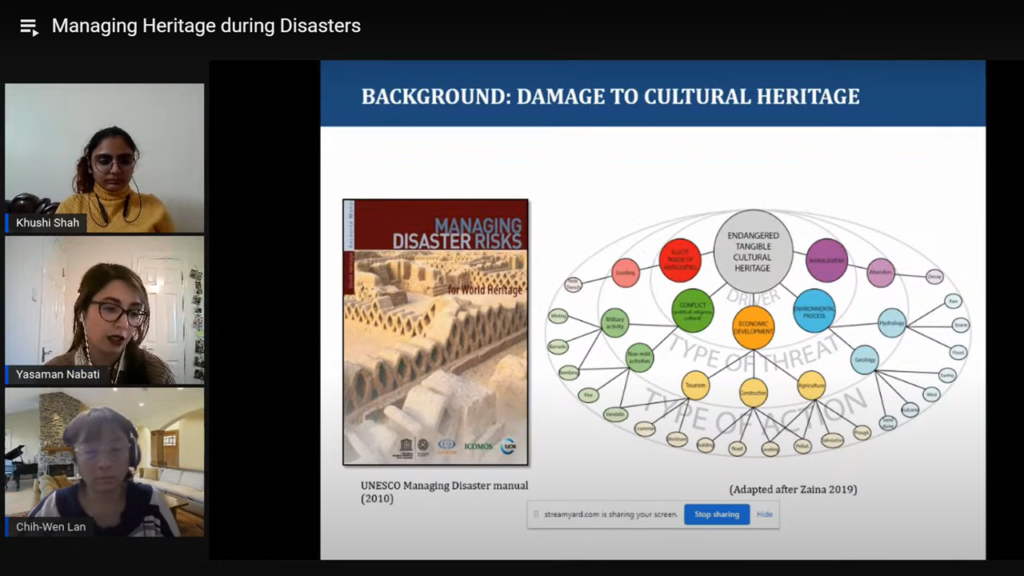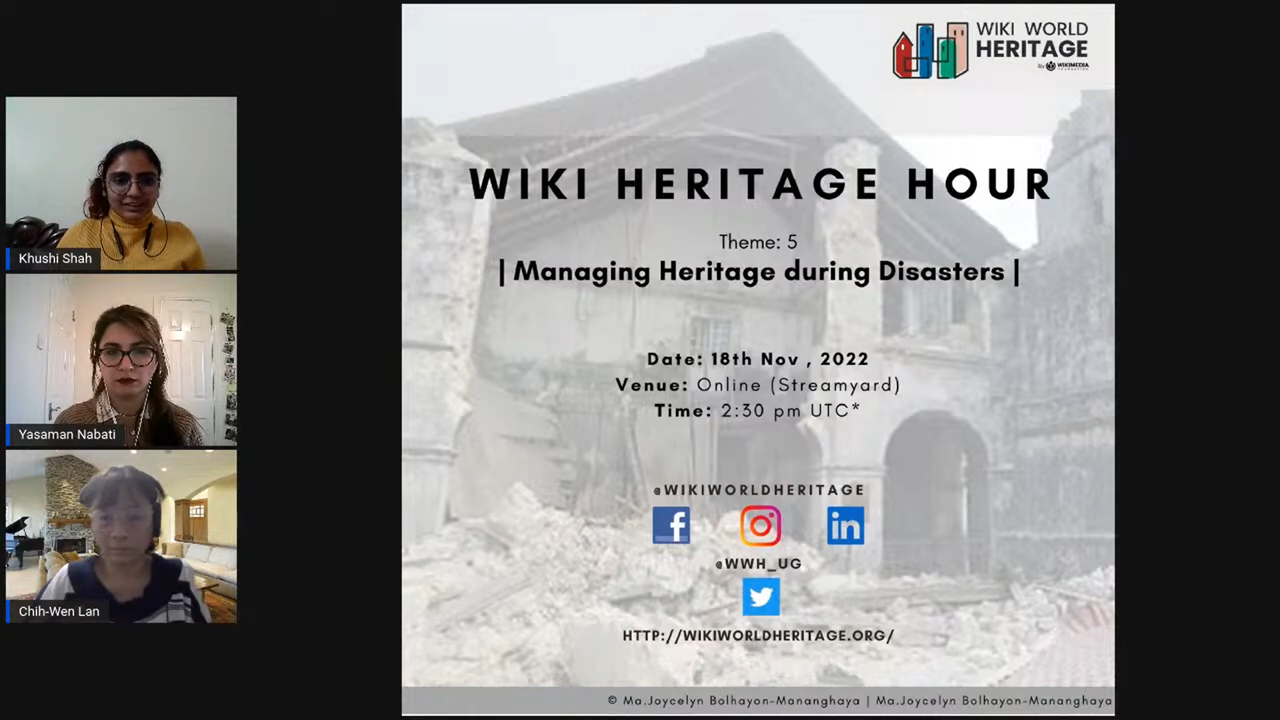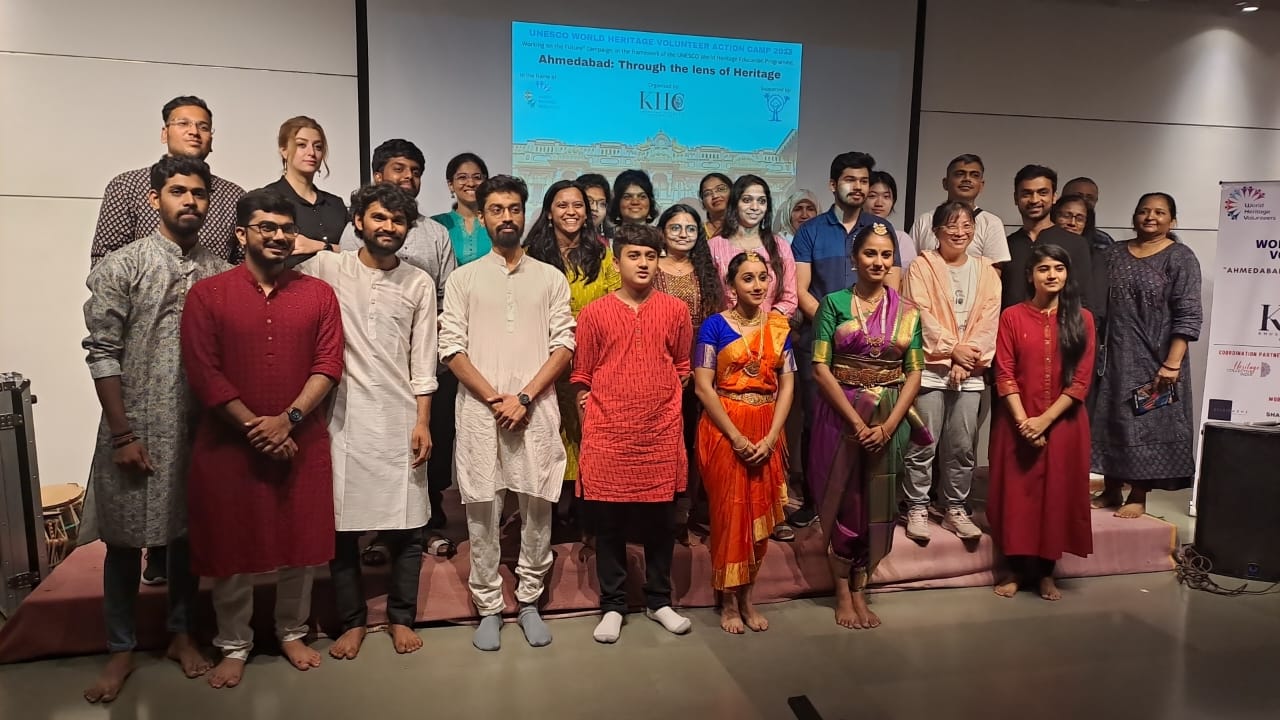The Wiki Heritage Hour initiative of Wiki World Heritage hosted a session on ‘Managing Heritage during Disasters’ last year with two prominent speakers Dr. Yasaman Nabati and Dr. Chih-Wan Lan.
Examining the repercussions of disasters on cultural heritage, the recent calamity in Morocco strikes a chord, especially considering that the recovery efforts are still in their initial stages.
In the early hours of 11:11 pm on 8th Sept 2023, Morocco experienced a seismic event that sent shockwaves through the nation, both literally and metaphorically. The earthquake, with its epicenter in the southwest of Marrakech, in Morocco’s Al Haouz province, serves as a stark reminder of the unpredictable forces of nature and the need for preparedness in the face of such events.
The earthquake’s focus occurred at a depth of only 11.2 miles (18 km) below the surface, according to the United States Geological Survey, which produced stronger shaking at the surface than it would have had it been deeper. The main shock was followed by a magnitude-4.9 aftershock about 20 minutes later.
The remote mountain villages of Morocco’s Al Haouz province witnessed massive destruction. In Amizmiz, a town located in the mountains about 20 miles (about 32 km) northeast of the earthquake’s epicenter, it is reported the casualty report of at least 2000 deaths. (1)
It was the strongest instrumentally recorded earthquake in Morocco, the deadliest in the country since the 1960 Agadir earthquake, and the second-deadliest earthquake of 2023 after the Turkey–Syria earthquake. (2)
Understanding Disasters and its Implications on Heritage
During the Wiki Heritage Hour session, one of the speakers Dr. Yasaman Nabati emphasized “Lost Heritage – Living memories.” Even when the tangible heritage is lost, its memory endures, underscoring the increased significance of documenting and safeguarding it before the recollections begin to fade away.
She shed light on how various contemporary factors, including but not limited to extensive infrastructure development and the effects of climate change, that have significantly heightened the extent of damage to historic and heritage properties.
Although the tangible consequences of this damage are readily apparent, our comprehension of the implications of heritage loss on an urban scale remains incomplete. Dr. Nabati highlighted a specific example, illustrating how the total loss of heritage can lead to forced migration and the abandonment of areas by local communities. This underscores the broader societal ramifications that extend beyond the visible destruction of physical structures.

Glimpses from the Wiki Heritage Hour session
As she explained the subtle impacts of heritage on society, she shared the example of the Gourgian Town and how the construction of airstrips resulted in the demolition of 300-year-old heritage and inadvertently resulted in the forced migration of the farmers of the region.
The conversation was then followed by Dr. Chih-Wan-Lan with her expertise on Cultural Heritage Disaster Risk Management and Emergency Response in Taiwan. Taiwan is a country that is extremely prone to earthquakes, it is essential for them to understand the implications and create a systematic methodology for recovery.
She shared with us the example of the 1999 earthquake that shook Taiwan to its core.

Measures undertaken by Taiwan to mitigate disasters
Following the significant earthquake experienced in 1999, Taiwan implemented an extensive system to address such disasters. The establishment of the Central Disaster Prevention and Protection Commission marked a pivotal step, with several departments operating under its hierarchy. Notably, the creation of the Bureau of Cultural Heritage is both interesting and empowering. This bureau facilitates collaboration between local governments and service centers, ensuring concerted efforts in the protection of cultural heritage in conjunction with the disaster and recovery department. This integrated approach reflects Taiwan’s commitment to safeguarding both its citizens and its rich cultural legacy in the face of potential natural disasters.

Additionally, a Heritage Disaster Info Network was also developed which works as a coordination platform amongst different agencies and individuals allowing a wider vision of the ground reality and its management.

Heritage Management during Disasters
The speakers stressed a vital point during their presentations, highlighting the profound importance of preserving memories associated with heritage. Beyond merely safeguarding tangible artifacts, heritage protection extends to understanding the inherent value these objects hold in shaping our individual lives and contributing to the broader fabric of society. The session consistently reinforced the critical role played by communities in the multifaceted task of protecting, conserving, and rebuilding lost heritage.
In the context of heritage management, a core aspect revolves around a nuanced understanding of the diverse risks linked to each facet of heritage. This includes recognizing the potential threats and challenges that heritage faces, whether from natural disasters, human activities, or other factors. To address these risks effectively, it becomes imperative to allocate sufficient resources and raise awareness within the community. This proactive approach ensures that heritage management is not merely reactive but involves a thoughtful and strategic process of identification, assessment, and mitigation. By fostering a comprehensive understanding of the risks and committing adequate resources, stakeholders can contribute to the sustainable preservation of our cultural legacy for future generations.



